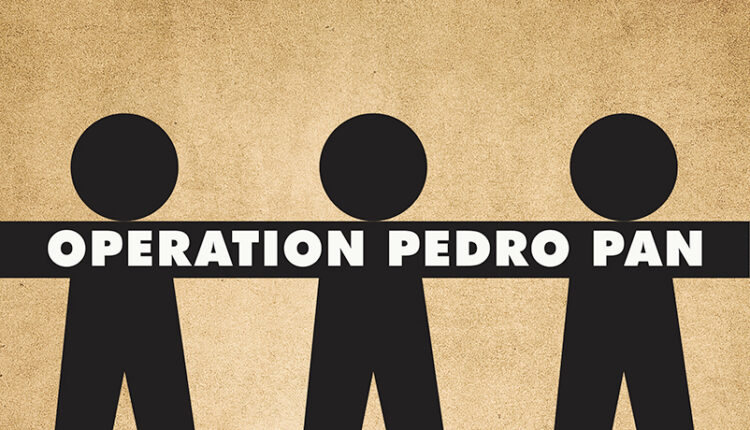
A new look at Pedro Pan
Revolutions, civil wars, and epidemics have a long half-life. They resonate long after all those involved in the events are dead. In the United States we are still fighting the Civil War on many contemporary fronts: voting rights and violence against African Americans at the hands of government authorities like the police, among others.
You cannot understand today’s American politics and the polarization between the adherents of the two main political parties without reference to the long shadow of the Confederacy. Every year, new books are published on ever-more specialized aspects of the Civil War.
The bubonic plague in England took place in the 17th century. Jonathan Swift published the most renowned book about it in the next century. We are still learning new things about the influenza pandemic of 1918.
Thus, the answer to the question posed by a friend, a fellow social scientist, when I told him I was reviewing a book about the Pedro Pan program of the 1960s, which involved the U.S.-orchestrated emigration of tens of thousands of Cuban children to the United States, “another book about Pedro Pan!” is: Why not?
This may well be one of the last books on the subject and perhaps also the definitive one. It is meticulously researched, including both secondary sources such as documents and data and myriad personal interviews with participants on both sides of the geographical and ideological divide.
The Cuban Revolution was one of the most significant events in Cuban history, and its aftermath the whole world faced the threat of a nuclear holocaust in 1962 when the United States and the Soviet Union faced off over the installation of Soviet nuclear missile in Cuba. After decades, the U.S.-Cuba confrontation seemed on the way to a partial resolution during the presidency of Barack Obama, who reestablished diplomatic relations between the two countries. But the Trump administration returned to the policy of hostility, and the new Biden administration, which has been busy reversing many of Trump’s policies, has not revisited Cuba policy.
The reason for this anomaly in Biden’s policy of reversing Trump’s is in part that U.S.-Cuba policy reflects Florida politics and the outsized role it plays in U.S. presidential elections. The other reason is that Cuba was the first country in Latin America that defeated a U.S.-backed invasion, an unforgivable embarrassment, one of many Fidel Castro perpetrated on the considerable pride of the United States.
Today, the Pedro Pan program has some new relevance. The U.S. government in the 1960s went out of its way to enable the emigration of Cuban children. Since Trump was elected, the U.S. government tried hard to block the entry of Central American children through a draconian policy of zero tolerance. While the reception of Cuban children in the United States suffered from many problems and abuses, these pale in comparison with the nightmare scenario the Trump administration concocted for Central American children and their families.
I was one of the children granted a visa waiver during the Pedro Pan era even though I came with family friends and was not part of the Pedro Pan program run in Miami by the Catholic priest, Bryan Walsh. While the children of Central Americans were separated from their families by the Trump administration and detained under dismal conditions, the family that brought me to the United States, with which I had no blood ties, was allowed to bring me into the country, house me under their roof, and send me to school until my mother arrived.
Like most Cuban children who came without their parents, I was eventually reunited with them both when my father finally reached Miami. Neither the Cuban government nor the U.S. administration tried to block this reunification process. The Trump administration, in contrast, used child detention and family separation as a deterrent to immigration and an incentive for parents already here to agree to deportation.
In this review, I am not going to dive deeply into the motives of the United States in relation to the Pedro Pan program. The author does that ably, looking at different possible explanations. On the Cuban side, I do have some personal as well as sociological explanations. On the one hand, the government was not worried about the exodus of upper middle-class adults. “For the enemy fleeing, a silver bridge,” goes a Spanish saying.
The children were a different matter, Pedro Pan was seen as one of the vilest of U.S. aggressions by Cuban officials from Fidel Castro on down. However, preventing the exodus of the children would be a violation of parental rights and play into the propaganda narrative circulated widely by government opponents that claimed Castro was going to “expropriate” children like he had large land holdings and other property.
The whole narrative was ludicrous; hundreds of thousands of Cuban children were to be sent to the Soviet Union. But many middle-class Cuban parents believed it. Hadn’t Fidel not broken all the rules, in a historical eyeblink?
The Cuban middle-class in the early 1960s was suffering a severe case of what Durkheim called anomie, a sense that long-accepted norms no longer applied, an uncertainty about what the new rules were, or even if they were any.
The result was what students of collective behavior call a panic, one that afflicted the Cuban middle class. The upshot of the panic provoked by real conditions and unreal propaganda, was that thousands of Cuban parents, with the best of intentions and with the conviction that it would only be temporary, did what Fidel Castro was unwilling to do: allow their children to be separated from them and be sent to another country and into unknown hands.
Deborah Shnookal, “Operation Pedro Pan and the Exodus of Cuban Children”. University of Florida Press, 2020, 313 pp.

